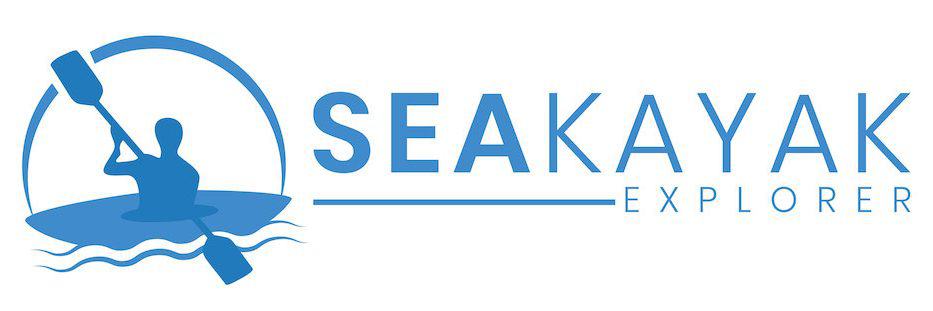Alaska is one of the last great wildernesses in the world. We have a former president to thank for preserving most of Alaska’s natural beauty and forests, and placing these areas of the state under protection of federal parks and conservation groups. If you have ever wanted to explore Alaska, you should try doing it on the water. Not only is it safer to explore Alaska this way, but it will also get you to different destinations within the state without having to trudge through more rough and dangerous territory.
There are several rivers, streams, and waterways in Alaska where you should attempt to kayak. All of these areas are not uncharted, since most of the Inuit and other native peoples have already been up and down these waterways for centuries. In this post we’re going to share a what we think are 10 of the best places to kayak in Alaska but there are hundreds more we haven’t listed.
1. Kenai Fjords, AK
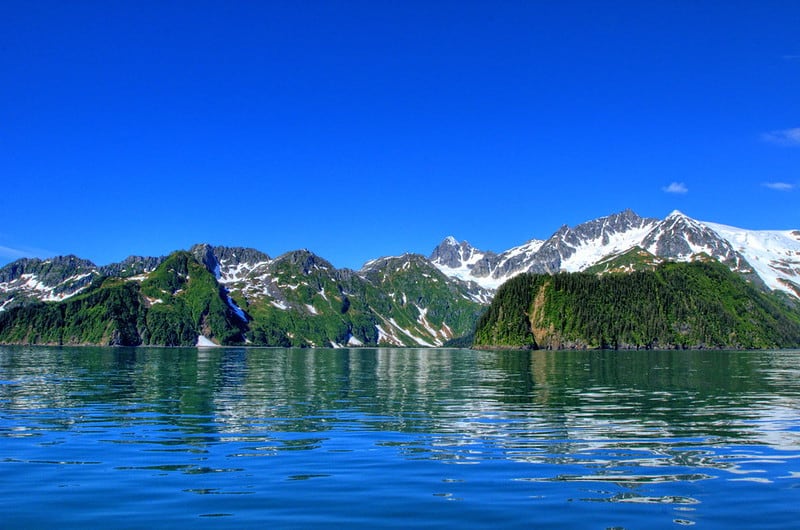
Our first recomendation for kayaking in Alaska is the Kenai Fjords. It’s a huge national park and is the only area in the United States where you can kayak and see massive fjords of frozen ice and rock. Even in spring, these fjords never fully melt because they are so thick and long.
This video below shows the sheer vastness of the landscape around Kenai National Park and you could spend years exploring the waterways.
One particularly beautiful spot to try is Ailik Bay which is large enough for you to paddle all the way around and catch many majestic views of the fjords and beautiful scenic views of the surrounding mountains and glaciers.
2. Eklutna Lake, AK
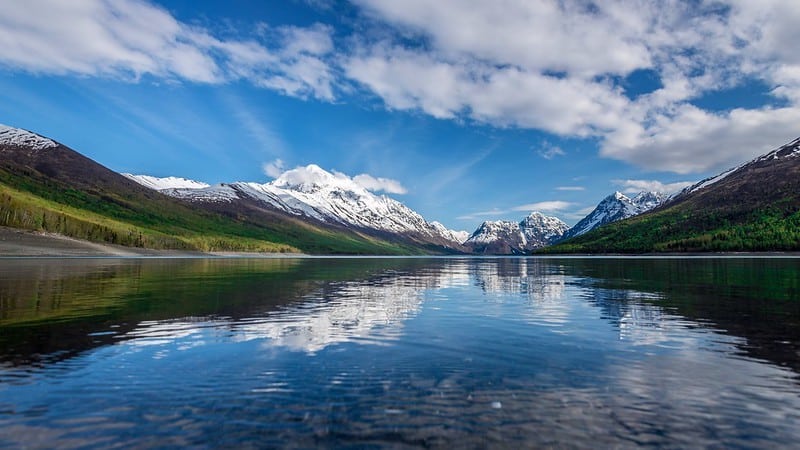
Up next we have Eklutna Lake which is a popular for two reasons. One, it is a short drive from Anchorage, Alaska’s largest city in the southeast corner, and two, it is the largest lake in the whole state. Seven long miles of lake invite you to paddle around and see the sites, including moose and elk that come to drink and many wild Alaskan birds.
3. Sitka Sound, AK
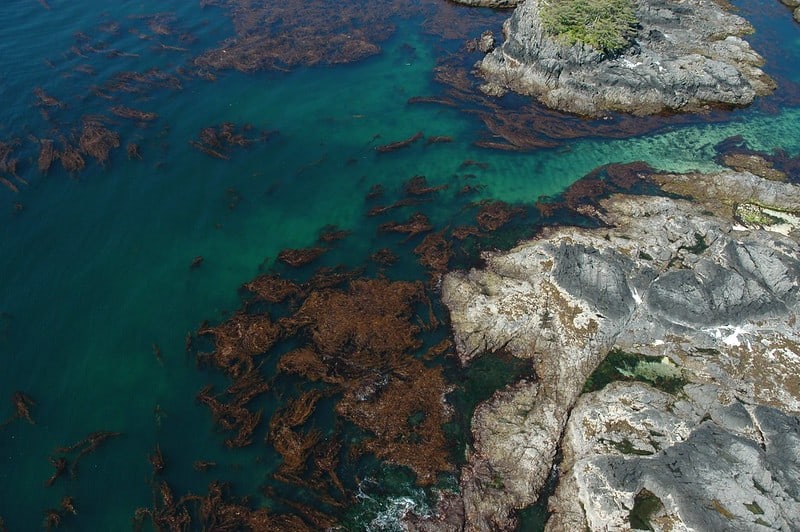
Another beautiful kayaking location in Alaska is the Sitka Sound. The views of the wild Alaskan mountains here are amazing, but nothing beats the sight of huge whales breaching off the sound.
You can kayak out into the sound, but be careful not to get too close to the whales! You may even spot an orca or two, depending on the time of year and migratory patterns of these animals.
4. Nancy Lake, AK
When you picture a quiet, smooth as glass lake with the sun setting over the trees, you picture Nancy Lake just outside of Anchorage. Barely a ripple stirs here, but you will hear plenty of loons and other waterfowl making noises here and there.
It’s the perfect location for a days paddle exploring the 760 acres of water and once you’re done there another 130 different lakes in the Nancy Lake State Recreation Area to check out after. It gets over 40,000 visitors a year coming to its shores. It’s also a fisherman’s paradise due to the large stocks of fish and at certain times of the year you can even try your hand at ice fishing!
5. Yukon Island, AK
In at number 5 we have Yukon Island island is quite overgrown and wild, but you can still camp on the shores if you like. The bay itself is ideal for anyone that wants to cash fresh salmon for dinner, especially during the salmon run. From your kayak, paddle around the island and watch the salmon run. Be careful, or you might run into a bear looking for those tasty fish!
6. Halibut Cove AK
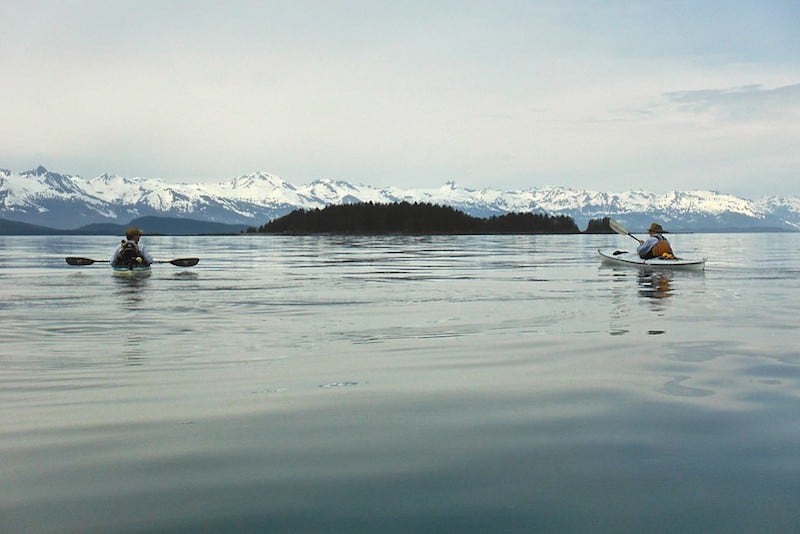
Halibut Cove may be the name of this little fishing town, but it is its unique features for kayak enthusiasts that draws a lot of attention. For one, the town has a floating post office, one of only a few in the world. In winter when the water freezes, the post office becomes stationary, locked in the ice. When the ice melts in spring, the post office bobs up and down and in circles in the cove.
If that isn’t a sight to see, consider kayaking to Gull Island to see the bird sanctuary is definitely worth a trip surrounded by stunning mountainous scenery that will be certain to take your breath away.
7. Gastineau Channel, AK
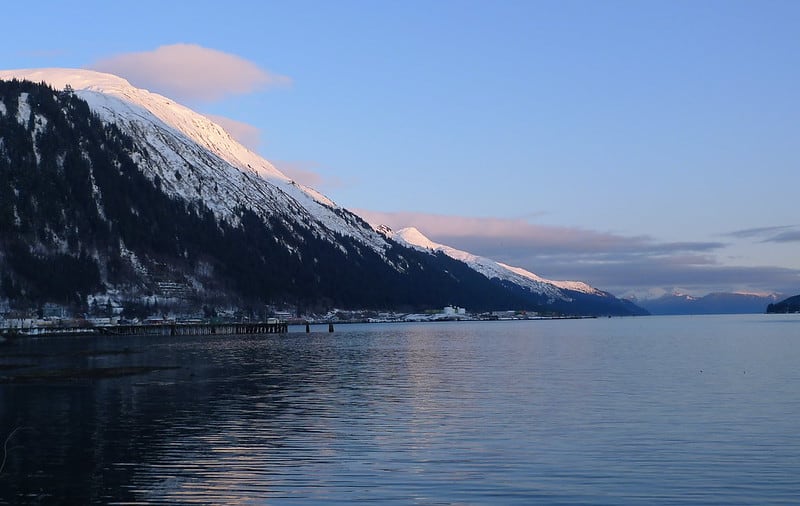
Most people know Juneau is the state capital, but a lot of people don’t realize that Juneau is part island, part land connected to British Columbia. If you were to climb and hike over the mountains and glaciers here, you would be in Canada!
The channel of water seperating the island from the mainland is known as Gastineau Channel and is a great spot for kayakers to paddle along and admire the breath taking views and scenery that litter this part of the world.
You can also head up towards the Mendenhall Wetlands and Game Refuge to the northwest and then into Mendenhall Lake to see the amazing Mendenhall Glacier. The park and waterways are only open two to three months a year (depending on the thaw and the weather), so plan ahead.
8. Tebay River, AK
For those of you who prefer the thrill of whitewater rapids in a kayak there are hundreds of rivers and creeks around Alaska that will provide the challenge and thills you’re after. We can’t list them all, but one option could be the Tebay River in the south east of the state.
As you can see in the video above, it’s not for beginners and should only be attempted by experienced paddlers. The crystal clear water, coupled with the beautiful rugged landscape make this a trip definitely worth doing.
9. Noyes Island, AK
Another interesting location to head to in your kayak is Noyes Island. It’s notable for the many sea caves as well as being a popular spot for spotting Puffins. One particuar sea cave known as Puffin Grotto, so named for the birds that mate and lay eggs underground in the surrounding islands off of Alaska, this grotto is one that requires a good kayaker to paddle up and into the grotto.
If you find that exciting, be sure to tie up your kayak and get out to explore the many caves present in here. There is a lot to see from an archaeological point of view, as many animals have come into these caves to rest and some, judging by the many bones, never left.
10. Nome, AK
Nome is one of the last cities in the western part of the state. If you kayak around the shores of Nome, you are actually in the Bering Strait. If you paddle out too far, you might be arrested by Russian patrol boats, since the invisible divider between Alaska and Russia is right there. You can even see Russia and Siberia from Nome’s shores on a clear day.
A big draw for people here is that Nome is the finish line for the annual dog sled races, something many Alaskans either paddle up from around the coast to see or fly in to see because there are no roads through the wilderness out of Nome!
Summing Up Kayaking In Alaska
The best time of year to go kayaking in Alaska and avoid gridlocked ice is in June and July. However you might want to attempt to kayak some of the southern areas later in the year as ice begins to form but isn’t quite solid yet. Be very careful about tipping your kayak over because Alaskan waters are always much colder than you might expect.
Kayaking Alaska just once is practically a requirement for anyone that enjoys this sport. There are so many lakes, rivers, streams, and even rapids that are worth the experience to any kayaking enthusiast. If you pick the right region, waterway and time of year, you will be well-rewarded with many scenic views, wildlife spotting, and possibly a shore lunch of fresh Alaskan fish or seafood.
It is also very peaceful and soothing, no matter how sore your muscles might be after several hours of kayaking around an Alaskan waterway. People who come to kayak stay to camp out and enjoy all that Alaska has to offer the outdoorsy sort. Fishing, hunting and hiking are year-round favorite activities of both Alaskan residents and tourists alike. If you just want to kayak and stay in some of the lodges and resorts in Alaska, choose kayaking spots near the big cities and national wildlife refuges. If you really want a challenge, kayak all the way around and along the coastline of this massive and amazing state.
